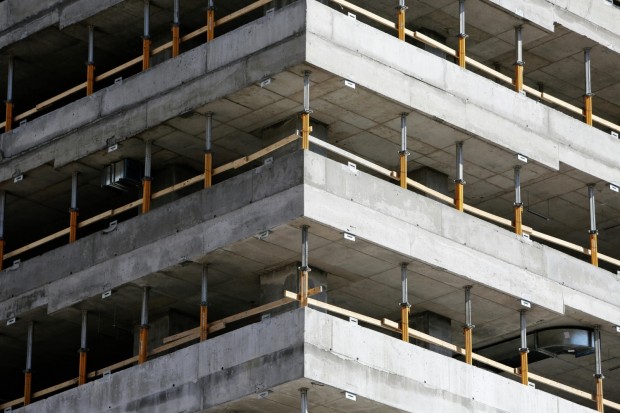Concrete production is widely recognized for releasing significant amounts of carbon emissions, which threaten the environment. In response to this environmental concern, green cement is gradually gaining attraction within the construction industry as a promising solution to mitigate the adverse effects of carbon emission pollution.

(Photo : Pexels/Pixabay )
Carbon Emissions in Cement Production
Cement manufacturing requires a significant amount of energy, and it can be challenging to reduce greenhouse gas emissions. On average, about half of the limestone fired in a kiln, typically powered by coal, is lost as carbon dioxide emissions.
During this process, limestone, composed of calcium carbonate, undergoes a chemical transformation that results in the formation of clinker, a mixture of calcium oxide and carbon dioxide. Between 0.6 and 0.9 tons of carbon dioxide are released into the atmosphere for every standard Portland cement manufactured.
People have been making concrete for almost two thousand years by combining gravel, sand, cement, water, and occasionally synthetic compounds. It is utilized to construct various structures, including pipes, buildings, and bridges. However, this substance is essential to many different sectors. Therefore, the primary difficulty that the cement industry must overcome is reducing carbon dioxide emissions while also satisfying the global market's demand.
Also Read: How Construction Workers Receive Compensation for On-Site Injuries
Popularity of Green Cement in Construction
Increasing amounts of green cement, a type of low-carbon cement that is both more environmentally friendly and cost-effective, are now being manufactured. In Redding, California, a new factory located next to an existing cement factory will reportedly be responsible for producing approximately 15,000 tons of low-carbon cement annually. Thus, the amount of concrete that could be made with this would be approximately 50,000 cubic meters, less than 0.0004% of the total concrete production worldwide.
Moreover, the materials technology business Fortera in Redding converts the carbon monoxide (CO2) collected during traditional cement manufacturing into green cement, a type of calcium carbonate ready for use. According to Fortera, this has the potential to reduce carbon emissions from cement by seventy percent on a tonne-for-tonne basis.
Moreover, a global reduction of 400 million tonnes in annual CO2 emissions from buildings could be achieved if all extant types of cement and concrete were substituted with the newly discovered sustainable alternatives created by the project. With this quantity, France's total annual CO2 emissions are equivalent to this amount.
On the other hand, concrete and green cement have been put through their paces in a building at the Technical University of Denmark and three bridges that the Danish Road Directorate and Railways Denmark constructed. The project focused on utilizing cement for particular objectives and optimizing its composition and incorporation into concrete. Furthermore, the concrete has undergone evaluation at several designated 'field exposure sites' to track the progressive deterioration of its characteristics. When considering the sustainability and endurance of structures, this information, in conjunction with the other demonstration projects, has been decisive in accelerating progress in this field. Accordingly, the new-generation, environmentally friendly cement has the potential to cut the worldwide carbon footprint of the cement industry by as much as 30%.
Related Article: Carbon Capture and Storage (CCS) in Construction: The Future of Sustainable Buildings







